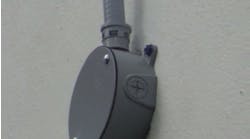In his long, distinguished career as an electrical safety expert, Lanny Floyd, P.E., has heard this question countless times: “If OSHA or NFPA 70E doesn’t require it, why should we do it?” A life fellow of IEEE, principal consultant for Electrical Safety Group, Inc., and adjunct professor in Advanced Safety & Engineering Management at the University of Alabama at Birmingham who also retired from DuPont, Floyd knows a thing or two about electrical safety hazards and compliance.
In this exclusive interview, Editor-in-Chief Ellen Parson sat down with Floyd at the PowerTest 24 Conference in Dallas, hosted by the InterNational Electrical Testing Association (NETA), in late February to discuss his presentation on “When Compliance Isn’t Good Enough.” Breaking down the key takeaways from his technical session, this video chat summarizes why simply complying with regulation and standards does not produce the desired effect every time and explores improvements in historical safety stats. It also explains why we as an industry can and must do better and outlines best practices that will lead to safer outcomes, including methods for continual improvement that can reduce worker exposure to hazardous electrical energy.
Many thanks to Lanny for taking the time to share his expertise with the EC&M audience in an effort to educate the electrical industry on key trends in occupational electrical safety and compliance as well as to NETA for making these videos possible.



